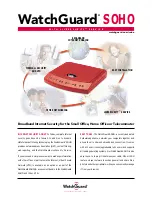
When adding a new
SNMP V3
user, specify a username, which is defined on the network
management system. The username is used to authenticate the management data, and to
encrypt it for privacy. The Authentication function is used by the Bandura Cyber TIG and
network management system to identify each other via secure 'digital signatures', while the
Privacy function encrypts exchanged data so as to be unreadable by intruders.
Configure the Authentication Type, either Message Digest 5 (MD5) or Secure Hash Algorithm-1
(SHA), and the Privacy Type, either Data Encryption Standard (DES) or Advanced Encryption
Standard (AES), along with Passphrases to match those used by the network management
system. More than one SNMP username can be defined on the Bandura Cyber TIG to support
multiple management systems.
3.7.9.2 SNMP Access
With
SNMP
Access,
you can provide a list of trusted networks or computers that may access
the Bandura Cyber TIG's management data. Any network management node matching the
internet address is allowed access to the Bandura Cyber TIG's management data, as long as
they have the right authentication as defined under the SNMP Users menu. If you do not
provide a list of acceptable networks here, any management node that offers the right
authentication will be able to access the Bandura Cyber TIG management data. This feature is
perhaps most useful when using SNMP version 2, which generally lacks much security.
3.7.9.3 SNMP Traps
Simple
Network
Management
Protocol
(SNMP)
Traps
are management data sent by the
Bandura Cyber TIG to your network management system. Normally, your network management
system will periodically query the Bandura Cyber TIG for management data, but sometimes the
Bandura Cyber TIG needs to immediately inform the management system of status changes.
Resource
Group
Alerts
and Throttles
are sent as SNMP traps when network traffic levels get too
high.
Enter the Internet address of the management node that needs to receive the Bandura Cyber
TIG's traps. The security settings here may or may not be identical to what we find in the SNMP
Users configuration. You can give these traps names for your own convenience.
72
















































